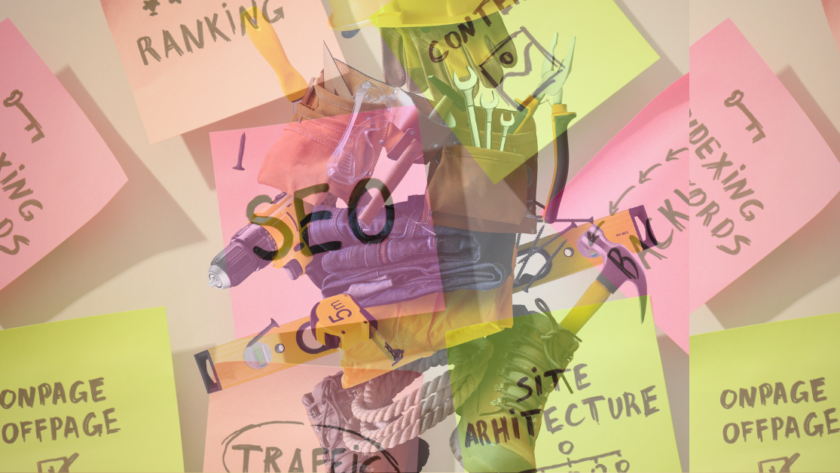As a digital marketer, I’ve seen firsthand the transformative power of artificial intelligence in our field. The day I uncovered my first free AI marketing tool felt like striking gold.
I had been drowning in client demands, always feeling one step behind.
Then, almost by chance, I stumbled upon an AI-powered content generator. My initial skepticism quickly gave way to amazement as I explored it’s capabilities.
Not only did it save me countless hours, but it also sparked fresh ideas I hadn’t considered before.
Since that pivotal moment, I’ve unearthed free AI resources that have revolutionized my work and the results I deliver for clients. In this guide, I’m thrilled to share my discoveries and help you harness the potential of AI in your marketing efforts – without spending a dime.
The AI Revolution in Marketing
Artificial Intelligence has fundamentally altered the marketing landscape, offering capabilities that once seemed like science fiction. This level of personalization was before impossible to achieve manually.
Improved Efficiency
By automating routine tasks, AI frees up marketers to focus on strategy and creativity. This shift allows for more impactful work and better use of human talent.
Data-Driven Insights
AI uncovers patterns and trends in data that humans might overlook. This leads to more informed decision-making and strategy development.
Real-Time Optimization
Many AI tools adjust strategies on the fly based on performance data. This agility allows for continuous improvement and better results.
Cost-Effectiveness
AI automation and improved targeting significantly reduce marketing costs while improving return on investment.
Free AI Tools: A Game-Changer for Marketers
You might assume that leveraging AI technology needs a hefty budget. However, a growing ecosystem of free tools offers powerful capabilities to businesses of all sizes.
These tools democratize access to AI technology, allowing solo entrepreneurs, small business owners, and marketing teams in larger organizations to harness it’s power.
Essential Free AI Tools for Marketers
Let’s explore some of the most impactful free AI tools available:
1. Google Analytics Intelligence
Google Analytics has long been a staple for marketers, but it’s AI-powered Intelligence feature takes data analysis to new heights. It uses machine learning to automatically uncover insights from your data, answer questions in natural language, and even forecast future metrics.
To get started, navigate to the Intelligence section in your Google Analytics dashboard. Try asking questions like “What’s my best performing content?” or “Which channel drove the most conversions last month?” The AI analyzes your data and provides insights in seconds.
I’ve found that using the automated insights as a starting point for deeper analysis often uncovers trends or anomalies I might have otherwise missed. This feature has become an integral part of my data analysis process, helping me make more informed decisions and spot opportunities quickly.
2. Canva AI Design Tools
Canva, the popular graphic design platform, has integrated several AI-powered features available even on their free plan. These include:
Magic Resize: This tool automatically adjusts your designs for different platforms. I’ve used it countless times to quickly adapt an Instagram post into a Facebook cover or a Twitter header.
Background Remover: This feature instantly removes backgrounds from images. It’s a game-changer for creating professional-looking product shots or headshots without the need for complex photo editing software.
Text to Image: This tool generates custom images based on text descriptions. While it’s still in it’s early stages, I’ve found it incredibly useful for creating unique graphics for blog posts or social media content.
These tools have saved me hours of design work and helped me create more professional-looking visuals, even though I’m not a trained designer. They’ve allowed me to experiment with different visual styles and concepts quickly, enhancing my creative process.
3. HubSpot’s AI Content Tools
HubSpot offers several free AI-powered tools for content creation and optimization:
Blog Ideas Generator: This tool provides topic suggestions based on keywords. When I’m feeling stuck or need fresh ideas for my content calendar, I turn to this generator for inspiration.
Email Subject Line Generator: Creating catchy subject lines for email campaigns can be challenging. This tool helps spark ideas and improve open rates.
AI-assisted Content Strategy Tool: This feature provides recommendations for content that aligns with your marketing goals. I’ve found it particularly useful for ensuring my content strategy stays cohesive and targeted.
These tools have helped me overcome writer’s block and confirm my content strategy stays data-driven. They’ve become an essential part of my content planning process, helping me generate ideas more quickly and align my content more closely with my overall marketing goals.
4. This powerful language model can assist with a wide range of marketing tasks.
I use it to generate ideas, draft content outlines, and even get explanations of complex marketing concepts.
For example, when I’m starting a new blog post, I often use ChatGPT to brainstorm potential angles or to create a rough outline. I’ve also used it to generate social media post ideas or to help craft email copy.
However, it’s crucial to remember that while ChatGPT is a powerful assistant, it’s not infallible. I always fact-check it’s outputs and add my own expertise and brand voice to any content it generates.
It’s a tool to enhance my work, not replace my own critical thinking and creativity.
Implementing AI Tools in Your Marketing Strategy
Now that we’ve covered some key tools, let’s talk about how to effectively combine them into your marketing strategy:
Start Small
When I first began incorporating AI tools into my workflow, I made the mistake of trying to apply everything at once. This led to overwhelm and inefficiency.
Now, I recommend choosing one or two tools that align with your most pressing needs and focusing on mastering those first.
For instance, you might start with Google Analytics Intelligence to improve your data analysis, then gradually introduce AI-powered content tools as you become more comfortable.
Set Clear Goals
Defining what you want to achieve with AI tools is crucial. Are you aiming to save time?
Improve personalization?
Enhance data analysis? Having clear goals will help you choose the right tools and measure their impact.
I set specific, measurable goals for each AI tool I apply. For example, when I started using Canva’s AI tools, my goal was to reduce the time spent on graphic design by 30% while maintaining or improving quality.
This clear goal helped me focus my efforts and track my progress.
Train Your Team
Ensuring everyone who will be using the tools understands how they work and their limitations is vital. This might involve setting up training sessions or creating internal guides.
When I introduced AI tools to my team, I created a series of video tutorials and held weekly Q& -A sessions to address any issues or questions. This investment in training paid off in increased efficiency and better results from our AI tools.
Combine AI with Human Creativity
AI tools are meant to augment human capabilities, not replace them. I use AI for tasks like data analysis and initial content generation, but I rely on human creativity for strategy and emotional connection.
For example, I might use an AI tool to analyze customer data and identify trends, but I’ll use my own experience and intuition to interpret those trends and develop a marketing strategy that resonates with our audience on an emotional level.
Continuously Evaluate and Adjust
Regularly assessing the performance of your AI tools is crucial. Are they delivering the expected results?
Do they need fine-tuning?
Be prepared to adjust your approach based on the outcomes.
I schedule monthly reviews of our AI tools, looking at metrics like time saved, content quality, and impact on key performance indicators. This regular evaluation helps me confirm we’re getting the most out of our AI tools and allows me to make timely adjustments when needed.
Overcoming Common Challenges
While free AI tools offer immense potential, they’re not without challenges. Here are some common issues I’ve faced and how I’ve addressed them:
Data Quality
AI tools are only as good as the data they’re fed. Ensuring your data is clean, accurate, and comprehensive is crucial. I learned this lesson the hard way when an AI-powered analytics tool provided misleading insights because of incomplete data.
Now, I regularly audit our data collection processes and clean our databases to confirm our AI tools have high-quality information to work with. This has significantly improved the accuracy and usefulness of our AI-generated insights.
Over-Reliance
It’s easy to become too dependent on AI tools, especially when they’re producing good results. However, I’ve found that AI should tell our decisions, not make them for us.
I make a conscious effort to balance AI insights with human intuition and experience. For example, while I use AI-generated content ideas, I always filter them through my understanding of our brand voice and audience preferences.
Ethical Considerations
Being transparent about your use of AI, especially in customer-facing applications like chatbots, is important. I always confirm our customers know when they’re interacting with an AI, and we have human backup for complex queries.
We’ve also developed internal guidelines for ethical AI use, covering issues like data privacy and avoiding bias in our AI-generated content.
Integration
Some free tools may not combine seamlessly with existing systems. I look for tools that offer APIs or native integrations with our current tech stack to minimize this issue.
When integration isn’t possible, I’ve found ways to create manual workflows that bridge the gap. For instance, we use Zapier to connect some of our AI tools with our CRM system.
Learning Curve
There can be a steep learning curve with some AI tools. I invest time in training and stay patient as my team and I adapt to new workflows.
I’ve found that creating internal documentation, hosting regular training sessions, and encouraging experimentation have all helped smooth the learning process.
Expanding Your AI Toolkit
As you become more comfortable with basic AI tools, you can start exploring more advanced applications:
Predictive Analytics
Using AI to forecast trends, customer behavior, and campaign performance can give you a significant competitive edge. I’ve started using predictive analytics to anticipate seasonal trends in our industry and adjust our marketing strategies accordingly.
AI-Powered A/B Testing
Leveraging machine learning to improve your A/B tests can help you get results faster and with more accuracy. I’ve used AI-powered A/B testing tools to improve our email subject lines, resulting in a 15% increase in open rates.
Automated Personalization
Implementing AI-driven personalization across your marketing channels, from email to website content, can significantly improve engagement. We’ve used AI to personalize product recommendations on our e-commerce site, leading to a 20% increase in average order value.
Voice and Visual Search Optimization
As these technologies grow, improving your content for AI-powered voice and image search becomes increasingly important. I’ve started optimizing our content for voice search queries, focusing on natural language and question-based keywords.
AI-Enhanced Customer Journey Mapping
Using AI to gain deeper insights into your customers’ path to purchase can help you improve touchpoints along the way. We’ve used AI tools to analyze customer interactions across many channels, identifying pain points and opportunities for improvement in our sales funnel.
Practical Exercises to Get Started
To help you put this knowledge into practice, here are some exercises you can try:
AI Content Challenge
Use an AI writing tool to generate five blog post ideas, then flesh out one of those ideas into a full post. Compare the process and result to your usual content creation method.
I did this exercise recently and was surprised by how quickly I could produce a rough draft. However, I also noticed areas where the AI-generated content lacked the nuance and brand-specific knowledge that I could provide.
Personalization Experiment
Use Google Analytics Intelligence to identify your top-performing content for different audience segments. Then, create a personalized email campaign targeting each segment with relevant content.
When I tried this, I saw a 25% increase in click-through rates compared to our standard email campaigns. The AI-driven insights helped me tailor our content more effectively to different audience segments.
AI Design Sprint
Use Canva’s AI tools to create a set of social media graphics for a week’s worth of posts. Time yourself and compare it to how long it would typically take you.
I was amazed at how much faster I could produce a cohesive set of graphics using the AI tools. What would have taken me several hours was completed in under an hour, with results that were just as visually appealing.
Chatbot Prototype
Use a free chatbot builder to create a simple customer service bot for your website or Facebook page. Test it with some common customer queries.
Building a basic chatbot was easier than I expected, and it helped us handle routine inquiries more efficiently. However, I also learned the importance of having clear escalation paths for more complex issues that the AI couldn’t handle.
AI-Powered Competitor Analysis
Use an AI tool to analyze your competitors’ content and social media strategies. Identify gaps and opportunities for your own marketing efforts.
This exercise opened my eyes to content themes and formats that our competitors were using successfully but we had overlooked. It helped us refine our content strategy and identify new opportunities for differentiation.
Frequently Asked Questions
What are the best free AI tools for marketing?
Some of the best free AI tools for marketing include Google Analytics Intelligence, Canva’s AI design features, HubSpot’s content tools, and ChatGPT. These tools can help with tasks ranging from data analysis to content creation and design.
How can AI improve my marketing strategy?
AI can improve your marketing strategy by enhancing personalization, increasing efficiency through automation, providing data-driven insights, enabling real-time optimization, and reducing costs while improving ROI.
Is it difficult to apply AI in marketing?
While there can be a learning curve, many free AI tools are designed to be user-friendly. Starting with one or two tools and gradually expanding your use can make the implementation process more manageable.
Can small businesses benefit from AI marketing tools?
Absolutely. Many free AI tools are accessible to businesses of all sizes, allowing small businesses to leverage advanced capabilities without a large budget.
How accurate are AI-generated marketing insights?
The accuracy of AI-generated insights depends largely on the quality of data input and the sophistication of the AI model. While AI can uncover valuable patterns and trends, it’s important to combine these insights with human expertise for best results.
Can AI replace human marketers?
AI is a powerful tool to augment human capabilities, not replace them. While AI can handle many tasks efficiently, human creativity, strategic thinking, and emotional intelligence stay crucial in marketing.
How often should I update my AI marketing tools?
It’s a good practice to regularly assess the performance of your AI tools and stay informed about new developments. Many providers update their tools often, so checking for new features or improvements every few months is advisable.
What are the ethical considerations when using AI in marketing?
Key ethical considerations include transparency about AI use, ensuring data privacy and security, avoiding bias in AI-generated content or decisions, and maintaining human oversight and accountability.
Can AI help with content creation?
Yes, AI can assist with various aspects of content creation, from generating ideas and outlines to writing drafts and optimizing for SEO. However, human input is still crucial for ensuring quality, brand voice, and accuracy.
How can I measure the ROI of AI marketing tools?
Measuring the ROI of AI tools involves tracking metrics relevant to your goals, such as time saved, improvement in key performance indicators (like conversion rates or engagement), and cost savings. Compare these benefits to the cost (or time investment for free tools) of implementing and using the AI solutions.
Key Takeaways
- Free AI tools can significantly enhance your marketing efforts without requiring a large budget.
- Start with basic tools like Google Analytics Intelligence, Canva’s AI features, and HubSpot’s content tools.
- Implement AI tools gradually, focusing on clear goals and measuring results.
- Combine AI capabilities with human creativity and strategic thinking for best results.
- Be aware of challenges like data quality and ethical considerations when using AI in marketing.
- As you become more comfortable with AI, explore advanced applications like predictive analytics and automated personalization.
- Regularly assess and adjust your use of AI tools to confirm they continue to meet your marketing needs and goals.
- Stay informed about new developments in AI marketing tools to maintain a competitive edge.
- Use AI to augment your marketing capabilities, not as a replacement for human expertise and creativity.
- Experiment with different AI tools and applications to find the best fit for your specific marketing needs and goals.




